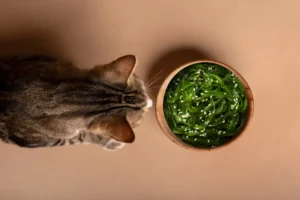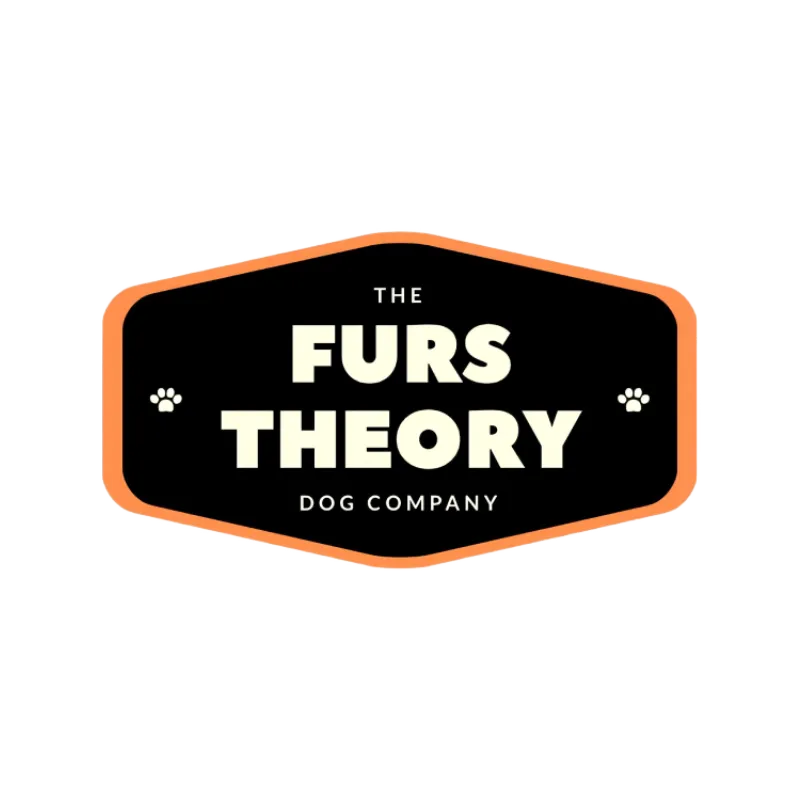Nutrition labels – ugh. If only it just read: Sugar, Spice and Everything Nice.
But in reality, it’s lines and lines of random numbers, alphabets or words that end with -ium, -ite, -ate and more. Plus, some explanations online are bombarded with even more sciency jargons.
As an average consumer, we get your pain of trying to scrutinise a pet food’s nutrition label. Hence, here’s a simplified or a dummies guide (if you will) to understanding what’s really in your dogs kibble.
And if all these sound too confusing and long winded, just scroll all the way down for a TLDR summary!
First Looks: The Eye-Catching Packaging
Most pet food brands in the market should come with an AAFCO (Association of American Feed Control Officials) stamp of approval. This voluntary organisation of many government officials from the FDA sets standards of adequate nutrition in animal feed.
These guys are responsible for protecting the nutrition of pets by monitoring and ensuring the food meets their minimal label, ingredient and nutritional requirements. Hence, AAFCO approved pet food brands would be packaging fronts that contain these elements:
- The brand name
- A cute and happy doggo
- Nutritional claims eg: High in ___, Gourmet ___, etc
- Food sources eg: Organic, Natural, etc
While some of us may be swayed by well designed product packages and well written labels (I know I am a sucker for them), here’s what the front labels mean.
Decoding The Labels
1. Product Name
Like the labels of our health foods, they’re planned to read and feel beneficial to the consumers health. In this case, our pets. Here are some variants of labels and what they mean:
- Meat names used alone such as “Chicken”, “Beef”, “Lamb” Pet Food means that the specified protein makes up at least 70% of the product including the water used for processing.
- Meat name + dinner / formula / entrée / platter such as “Duck Entrée” means only 25% of the entire product needs to contain the specified protein. If it’s a combination of proteins, the percentage in total still remains at 25%.
- “___ With Chicken” labelled pet food means the product is only required to have 3% of the specified protein. Or if it’s “Chicken Dinner with Cheese”, it means that this product contains at least 3% cheese.
- “Beef Flavour” or any other type of meat flavour means a very little amount is used simply to add flavour to the product.
2. Natural Food
Brands are only allowed to use the word “natural” if the product is completely free from artificial preservatives, flavouring and colouring. Hence, you would probably find labels that read “Natural Lamb And Beef Dinner with Added Vitamins and Minerals.” This indicates that the product is supplemented with vitamins and minerals to replenish the naturally occurring ones that were lost during production.
3. Organic
Not to be confused with “natural”, this term refers to the conditions under which the plants were grown or the animals were raised. It should not contain artificial preservatives, colouring or flavouring, antibiotics or growth hormones in meat and meat by-products, no or little fillers.
However, at the moment, synthetic additives such as vitamins and minerals are allowed to be used in pet foods labeled as organic.
4. Grain-Free
Typically defined as not containing corn, soy, wheat, rice, barley or other grains but it may contain peas, lentils, potatoes and/or sweet potatoes.
5. Gourmet, Premium, Super Premium, Ultra Premium
Besides helping us pet parents feel better about feeding our furkids “premium gourmet pet food”, these labels are not actually reflective of the quality of ingredients used. These products are not held up to any higher nutritional standards nor required to contain any different or higher quality ingredients than other products labelled as “complete and balanced”.
6. Complete and Balanced
Pet food with the labels “complete” means that it contains all the nutrients needed for the pet at the life stage stated. However, “balanced” means that the product would provide the proper energy-to-nutrient ratio for the life stage stated as well.
However, any other claims of a similar nature such as “100% nutritious” which suggests the product is suitable for sole nourishment is in fact, not.
7. New Proteins
Nope they’re not sourced from some new species of animals but rather unconventional sources such as rabbit, kangaroo and bison. These meats would have different digestibilities and nutrient profiles than the usual proteins used but they may be suitable for dogs that face issues eating the commonly used meats.
8. Lite, Low-Calorie, Low-Fat
As the label suggests, it should have a lower percentage of fats and calories. However, the AAFCO requires these brands to show the percentage reduction in calories or fats in comparison to a product.
Flipping The Pa(cka)ge: What’s In A Nutrition Label
Okay now that we’ve picked the product with the labels that suggests a higher animal protein percentage with minimal gourmet and premium fluffs, it’s time to check out the nutrition label.
All pet food nutrition labels must list their ingredients in descending order by weight. Ideally, you should see ingredients that are good for your dog’s nutrition such as meat, poultry and/or fish being the first few ingredients.
However, this could also be a way for pet food manufacturers to break down a large serving of unhealthy ingredients into smaller chunks to hide them in the paragraph of words.
For example, a product list could contain:
- Beef (30%)
- Ground corn (20%)
- Corn gluten(20%)
- Ground wheat (20%)
- Wheat flour (5%)
- Corn bran (5%)
Out of these 7 ingredients, corn products make up 45% of the total ingredients list with a protein being at only 30%. The additional 25% of wheat products makes the total carbohydrate percentage at 70% which is less than ideal for a dog’s diet.
In a long list of products, you might see some familiar and unfamiliar terms. Here’s what the commonly found ones mean or rather should contain.
Animal Based Ingredients
1. Specified Meat
The flesh and organs of slaughtered animals such as chicken, venison, cattle, lamb, buffalo, rabbit, salmon and turkey which also includes all the components that come with it. For example striated skeletal muscles, tongue, heart, overlying fat and the skin, nerves and blood vessels.
Best if it’s listed as the first ingredient!
2. Meat or Poultry By-Products
This is the clean parts of slaughtered animals excluding meat and other body parts like hair, horns, teeth or hooves. Typically it contains organs like lungs, spleen, kidneys, brain, liver, blood, bone, some fatty tissue, stomach and intestines without their contents.
Essentially the whole slaughtered cuts you’ll find in your wet markets.
3. Specified Meat Meal
Nope it’s not what the animals eat but rather grounded up, dehydrated and concentrated combinations of meats. For example, Fish Meal would contain the entire fishes processed into fine powder and used in the kibble formula. It’s second best to named meats and good to see listed as one of the first 5 ingredients.
4. Quality Named Fats and Oils
Chicken fat, turkey fat, Omega-3 and Omega-6 are a great addition to your pets diet. Here’s a list of fresh sources containing these nutritions you can add to your dog’s diet.
The Takeaway: Opt for products that specifies the meat, by-products, meat meals as well as fats and oils used in the first 5 ingredients.
Plant Based Ingredients
These would be the source of carbohydrates and fiber in kibble. These ingredients should be found further down the ingredients list.
Carbohydrates provide energy for our doggos and can be found from grains like wheat, barley, rice, oats, corn, potatoes, peas and more.
Fiber is part and parcel of the carbohydrate ingredients which are indigestible. This is necessary for ours and our pets’ formation of poop. However, a diet that’s too rich in fiber could cause the formation of poop that’s overly firm.
1. Ground Corn
The entire corn kernel (what you’ll find sold with butter at cinema snack bars) chopped or ground up.
2. Corn Gluten Meal
The dried residue by-product from the manufacturing of corn syrup or starch.
3. Brewers’ Rice
Small fragments of rice kernels that have been separated from larger kernels of milled rice. Kind of like the rejected smaller broken bits of rice.
4. Brown Rice
The stuff you see in healthy food menus which is basically unpolished rice with the kernels removed.
5. Soybean Meal
The by-product of the production of soybean oil.
6. Fruits And Vegetables
Unprocessed whole fruits and vegetables are great to be found in an ingredients list as they’re a good source of vitamins and minerals. However, considering how kibbles are made, these nutrients are often lost in the process.
That being said, kibbles with processed ingredients such as citrus pulp, apple pomace, grape pomace, tomato pomace should be avoided.
The Takeaway: The total percentage or number of plant based ingredients that add to the carb and fibre bulk to the product must be lower than the animal based ingredients.
Sciency Sounding Words and Alphabets
1. BHA
It’s butylated hydroxyanisole which is a fat preservative.
2. Ethoxyquin
The chemical preservative that gives the shelf life to kibbles.
3. Tocopherols
Otherwise known as Vitamin E, this is a naturally occurring compound that is used as natural preservatives.
4. Chelated or Sequestered Minerals
For example, chelates, proteinates, amino acid chelates, and polysaccharide complexes. Essentially these are minerals that bind to a living component or amino acid to boost absorption.
5. Non-Acidic Vitamin C
Ester C, Calcium Ascorbate, Stabilized Vitamin C, L-Ascorbyl-2-Polyphosphate are all forms of non-acidic vitamin C. The highly acidic nature of ascorbic acid can have detrimental side effects to your dog’s kidneys and liver. Hence a non acidic version is in theory more desirable for dogs and more effective since it’s better absorbed.
The Takeaway: Natural or synthetic, these are all essentially additives and preservatives added to the product to extend its shelf life or restore the nutrients that were lost in the process.
What You Should Be Looking For
Product packaging with:
- No verbal fluffs of overpromising ingredient quality such as super premium, gourmet or Entrée
- Labels that clearly state the meats as the main source of ingredient and not as flavours or as a secondary ingredient
An ingredient list with:
- Real recognisable ingredients such as named meats, vegetables and fruits
- Multiple animal protein sources high up in the ingredients list
-//-
TLDR:
Kibbles are thought to be a cheap, quick and convenient solution to our pets’ hunger. While there are high quality ingredients in some kibble brands, unfortunately the high levels of carbohydrates and fibre along with the low levels of moisture content still make it a lesser ideal staple food.
Plus, here’s a list of ingredients in kibbles that you should avoid, which makes this entire process of vetting through marketing labels and lists even more confusing or at best, complicated.
Which is why here at Petchef we believe that preparing fresh food for our pets is the best and ideal option, but it also should not be too inconvenient and pricey.
Plus, because the meals are already nutritionally balanced and complete, there is no need to add other external vitamins and supplements to your pet’s diet. Therefore, unless your pet has a medical condition, the right natural ingredients in the right quantities are already appropriate and sufficient in Petchef’s food.
With freshly cooked meats and ingredients, there are no preservatives, additives, and flavourings that you need to worry about. Your pet will be able to get the best nutrients directly from the food, without any chemical processing.
Catering to our busy lifestyles, we’ve created an ideal meal prepped plan for your furkid that delivers right to your doorstep. All that’s required is for you to tell us all about your furkid, and our friendly Petchef Advisors will be able to work out a suitable meal plan with you.
Click here for a quick chat and request a meal sample on us!
Feature Image Credit: Medium











